Some armored cars and armored personnel carriers of foreign countries
An armored personnel carrier (APC) is a combat armored tracked or wheeled vehicle, which is intended primarily for transporting personnel of the infantry department to the battlefield, while providing it with fire support. On the BTR there are regularly installed or built-in weapons of caliber up to 20 mm.
Armored vehicles and armored personnel carriers, among other things, are used to guard troops during the march, reconnaissance and patrolling. For actions in the dark, night vision devices are installed on the BTR. Equipped with special devices, this technique is used to tow mortars and guns, transport goods and ammunition, and evacuate the wounded. On the basis of armored personnel carriers and armored vehicles can be created self-propelled mortars and guns, combat support vehicles to combat tanks, anti-aircraft installations, etc.
The US Army BTR fleet, which consists of more than 18 thousands of vehicles, includes major armored personnel carriers such as tracked M113 (around 13, 000 units) and AAV7A1 (in the marines there are more than 2 500 vehicles), as well as BTR on wheeled vehicles "Strayer »(Wheel formula 8x8) (over 2 000 machines).
The main BTR M113 was developed in 57-59 years of the last century and in mass production was launched in January 60-th. In general, including those machines that were built on the basis of M113, approximately 85 thousands of vehicles were manufactured. For a long time, he remained the main armored personnel carrier of the US Army, and in substantial quantities was supplied to other countries. He took part in many armed conflicts.
Now it is in service with a number of states, including the USA, but is gradually being supplanted by newer machines. Of the 13 thousands of armored vehicles M113, which are in service with the US Army, most have been upgraded to modify the A3.
The BTR powerplant is a diesel engine 6V-53T RISE (275 hp) with turbocharging by the Detroit Diesel Corporation and four-speed hydromechanical transmission X-200-4 by Allison.
The main difference from previous versions is an increase in the survivability of the vehicle on the battlefield due to the additional armor protection, an improved fire extinguishing system and protection against weapons mass destruction. The body is welded sealed, made of aluminum armor 12-14 mm thick. To dismount the landing in the stern there is a folding ramp, in the middle of which there is an emergency exit door. The commander is located in the rear of the case and can carry out a circular review of the terrain from the commander's tower. He can fire a 12,7-mm machine gun on both ground and air targets. The driver is located in the forward part of the hull on the left. Driving at night provides the Ml9 driver's night vision device. The armored personnel carrier is floating, moving through water is made by rotating the tracks, which are enclosed in hydrodynamic covers. To improve the navigational qualities of the M113, a wave-reflecting shield is installed.
On the basis of the APC created a family of machines: 120-mm self-propelled mortar setting M106 and 81-mm M125, command and staff vehicles (CSV) M577 (self-propelled anti-aircraft weapon "Vulcan" M741, unarmoured tracked carrier M548, rocket launcher M667, self-propelled anti-tank systems M901 and a machine with equipment for setting smoke screens MP01 A3 (LAMPSS), capable of setting the curtains at a distance of up to 6 km, and others.
In connection with the reorganization of the US Army for the mechanized brigades, an Stryker BTR was created based on the LAV-III armored combat vehicle (8 x 8).
The crew of the machine 11 people (nine of them - landing, driver and commander). Armament - 7,62 or 12,7-mm machine gun or 40-mm automatic grenade launcher (Stryker BTR, M1 126). Also available are machines with an 105-mm cannon (M1 128) or an 120-mm mortar set-up (M1 129).
The standard BTR is equipped with a hydropneumatic suspension, a centralized tire inflation system, a filter ventilation unit (FVU), a CRNS NAVSTAR receiver, night vision devices, a guidance and fire stabilization system. BTR has passive armor, but the possibility of installing a system of active protection, the development of which is underway in the United States.
On the basis of the Stryker BTR, the following were created: combat reconnaissance vehicle (BRM) (M1 127), CSM (M1 130), radiochemical and biological reconnaissance vehicle (M1 135), ambulance (M1 133), self-propelled ATGM (M1XNNXXNMXNNXXNNXXNNXXNNXXNNXXNNXXNNXXNNXXNNXXNNXXNNXXNNXXNNXXNNXXXNNXXNNXXXNNXXXNNXXXNNXXNNXXXNNXXXNNXXXNNXXXNNXXXNNXXXNNXXXNNXXXNNXXXNNXXXNNXXXNNXXNNXXNXX) fire support machine (M134 1), engineering (М131 1) and a number of others.
The armed forces of the Federal Forces of Germany as of 2010 had more than 2 600 BTRs, which are designed to be in a US-made 348 1, 6, 6, and 1. Sweden Planned for delivery to the troops 500 new BTR "Boxer" in various versions. There are also 113 armored vehicles "Dingo" (150 x 206). In 272, the company Henschel Vertechnik signed a contract for the production of 400 machines TPz-4 Fuchs, the delivery of which to the NE of Germany was completed in 4. A small number of these armored personnel carriers were also sent to the Netherlands. Currently, the APC TPz-1977 "Fuchs" out of production. It is also in service with the United States, Britain, Israel and Venezuela.
The welded body of the BTR, made of steel, protects the crew from small arms fire and shell fragments. The cross-section of the body has a diamond shape.
The power unit is represented by an eight-cylinder diesel engine "Mercedes Benz" OM402A with a turbocharger power 302 l. with. and six-speed gearbox.
The armored personnel carrier is made floating, movement on water is carried out by means of two propellers mounted in the rear part of the hull. To control the machine afloat, the screws are equipped with an 360 degree rotation system. Rated load capacity (without loss of navigational qualities) 4 000 kg. On board space is provided for three water bilge pumps with a total capacity of 180 l. / Min.
The driver's seat is located in the forward part of the hull to the left, and the commander is to the right of him. The driver’s workplace is equipped with four periscope observation devices mounted on the roof in front of its hatch. The troop compartment is located in the rear of the hull, and between the control compartments and the troop compartment is the power plant (SU). Between these compartments there is a small passage on the right side.
The landing consisting of ten people settles down on separate seats (five seats on each side). Dismounting through two rear doors. The BTR is equipped with a single HLF, which provides ventilation for the assault and control sections.
Depending on the tasks to be solved, an 7,62-mm MG 3 machine gun (in front of the commander's hatch) or an X-NUMX-mm Rheinmetall automatic cannon on a rotating turret can be installed on the machine. In addition, the BTR is equipped with six PU smoke grenades mounted on the port side.
Variants of the BM on the basis of the Fuchs TPz-1 armored personnel carrier: KSHM, engineering vehicle, radiation, chemical and biological (RCB) reconnaissance vehicle, EW, BRM, fire support vehicle.
Multi-purpose armored car "Dingo" company "Krauss-Maffei Wegmann" developed on the basis of the commercial truck "Mercedes Benz".
The machine (4x4) has an armored body that protects the crew from bullets (caliber to 9 mm) small arms, shell fragments, as well as from some types of anti-tank and anti-personnel mines.
Standard equipment includes three systems: centralized tire inflation, air conditioning, anti-lock, anti-skid and directional stability, as well as heat dissipation screens and TPU. On the roof of the vehicle can be installed (for the crew and the landing) 7,62-or 12,7-mm machine gun or 40-mm grenade launcher. The equipment of the armored car with the systems of RChB protection and with the equipment of the automated control system of the tactical level of the Federal Republic of Germany (for mobile command and communication and control points) is also provided.
Armored car "Dingo" serves as a base for the creation of command and staff, combat reconnaissance and ambulance vehicles, and can also be used as a transport vehicle for the supply of ammunition or stocks of material resources.
At the first stage (including 2000 year), work on the Boxer BTR (8 x 8) in Germany was carried out jointly with the UK and France under the GTK / MRAV / VBCI program, but later both of these countries refused to participate in this project because of high cost. The development of the machine was completed in 2009 year together with the Netherlands.
A distinctive feature of this BTR is the modular design of the main components (hull and chassis). This approach provides for the release of a single for all types of machines of the unified chassis family (basic module) and the corresponding range of functional modules that determine the purpose of the machine in one configuration or another.
The base module is an autonomous armor design on a wheeled chassis (8 x 8), and the functional modules are in the form of quick-release armor structures. Each of them with the same overall dimensions and seats has a specialized internal layout and a set of special equipment, depending on the military purpose. If necessary, the module in a short time can be replaced by another (similar or other purpose). This principle allows to reduce the cost of forming the required fleet of armored combat vehicles and significantly simplify the system of material and technical support of units and divisions.
Another feature of the Boxer armored personnel carrier is the implementation of the modular booking concept, when a set of quick-detachable armor plates is mounted on the carrier armored car body, which allows you to quickly replace damaged blocks and achieve the required level of protection of the sample, depending on the situation and tasks.
The fleet of armored personnel carriers of France, according to 2010, consisted of more than 3 700 VAB (4 x 4) and 12 Swedish tracked BV-206s.
The VAB BTR was developed by Renault and GIAT by the order of the France of France in two versions at once: four-wheeled and six-wheeled. Moreover, the case of both machines have a single layout, but differ in size.
Common are also SU, control mechanisms, differentials, brake system, as well as other nodes and systems. By production knots and units of commercial cars were widely used. For the needs of France, 4 000 VAB 4x4 was released, while the 6x6 modification is an export version. There are about 5 000 BTP VAB in the world.
The body of the BTR VAB is welded, consists of high-strength steel sheets, which provides protection from small arms fire and shell fragments. In front of the control department is located, to the left - the place of the driver, to his right - the commander.
This machine in the basic configuration is equipped with 7,62- or 12,7-mm machine gun, while on the options supplied for export, other weapons can be installed, depending on the requirements of the customer, including rocket and cannon.
Directly behind the department of control is the engine compartment. On the left there is a six-cylinder in-line diesel engine of liquid cooling “Renault” MIDS 06.20.45 with the power of 220 hp. with hydromechanical transmission providing five forward gears and one reverse gear. Along with this, in the export version it is possible to have a more powerful engine. Clutch and gearshift control drives are electromechanical. On each axis there is a main gear and a locking differential. The transmission and gearbox are located in front of the engine. The power compartment is equipped with a separate fire extinguishing system.
In the rear of the hull is the troop compartment. It can accommodate six fully equipped infantrymen. Landing and dismounting of landing are carried out through two stern doors. The machine can be equipped with an FVU, heating system and a system for protection against OMP, additional armoring, night vision devices and a system of centralized tire inflation.
Independent suspension with hydraulic shock absorbers. The BTR with the 6x6 wheel formula is driven by the first two pairs of wheels, and the 4x4 is the front wheels only. All the wheels are driving, but when driving on the highway, the front wheels (on 6x6 cars, there are two front pairs) can be switched off.
These machines are floating. Movement afloat is carried out with the help of two controlled water cannons installed on each side behind the hull. Two electric pumps are designed to remove water that has got inside the space reserved in the reserve.
Based on this BTR, a number of BBMs of various purposes were created: KSHM, armored recovery and ambulance vehicles, self-propelled ATGM, 81-mm self-propelled and 120-mm towed mortars, anti-aircraft self-propelled unit (ZSU) with twin 20-mm gun.
The fleet of land forces of the Italian Army as of 2010 year consisted of 5 800 units of equipment, of which 3 000 - American-made M113АZ BTR, 1 760 - VCC-1 / 2, 304 - Fiat 6614, 91 ozxxxxxxxxxxxxxxxxmx AAVP206A50 and around 7 BTR "Puma".
The Italian consortium Iveco has developed a light Puma armored personnel carrier with wheel formulas (4x4) and (6x6) with a capacity of four (1 + 3) and seven (1 + 6) people and a 7 and 8,4 combat mass, respectively. The park of SV of Italy numbers about 600 of these cars, 450 of which with the wheel formula 6х6 and 150 are 4x4.
The main armament - 12,7-mm machine gun. The power plant of the BTR is represented by a four-cylinder Iveco diesel engine (8042 type) hp with an 180 power. and automatic transmission. The car has many standardized units, such as engine, transmission and suspension, similar to the existing models of automotive technology of national development.
On the basis of the Puma BTR, various types of equipment were created: KSHM, BRM, vehicles equipped with anti-tank and anti-aircraft complexes, with 81-mm mortar installations, sanitary BTR and RCB-protection vehicles.
In 1970-ies in Italy tested the American modernized armored troop-carrier МХNUMXА113 with enhanced armor protection and armament, after which the company OTO Melara acquired a license for the production of this vehicle. At the same time, Italian specialists created their own version on the basis of the armored personnel carrier, which was designated as VCC-1. Its production was completed in 1 year, but this machine is currently in service with the NE of Italy and Saudi Arabia.
The body of the BCC VCC-1 is welded, made of aluminum alloys, reinforced in the frontal part and along the sides of 6-mm steel plates. The chassis is covered with protivokumulyativnymi rubber-metal screens. On the sloping sides there are two embrasures with viewing glass blocks for firing personal weapons, and another one is located in the aft door. Seats and hatches in the roof are located in the same way as in the N4113 BTR.
The main armament is the 12,7-mm machine gun М2 НВ, openly mounted on the turret in front of the hatch arrow, to the right of it there is an auxiliary caliber 7,62 mm. There is a variant of an open-top armored turret with the same machine gun and smoke grenade launchers located along its sides.
Developed four-barreled 25-mm ZSU STDAM, as well as machines with 20-, 25-, 60- or 90-mm armament.
The VCC-1 has a hp 215 diesel engine. and hydromechanical transmission “Allison TX-100”, with the maximum speed of the armored personnel carrier on the highway is 64,5 km / h. The chassis has five road wheels each with front-wheel drive wheels, torsion bar suspension, with hydraulic shock absorbers, tracks with rubber-metal hinge are equipped with rubber linings.
The crew and assault forces of the car are nine (3 + 6). The driver is located in front of the case on the left, above it is a hatch that opens to the right. On board the machine there are four periscopic M-17 observation devices and one M-19, which allow for a circular survey of the terrain. Periscope M-19 can be replaced by a passive night vision device for driving at night. The place of the commander is located directly behind the place of the driver. The gunner’s place is to the right of the commander, while the workplace of each of them is equipped with five periscopes.
The troop compartment is located in the rear part of the vehicle. For landing and dismounting of a landing, there is a reclining ramp at the back. The armored personnel carrier is floating, movement afloat is carried out due to rewinding of caterpillars.
At the beginning of 2000's, the company Aris Spa released a set of attachments to improve the amphibious qualities of the M113 BTR (USA). 1 350-1 700 kg kit weight, including bow and stern parts. These parts are also welded and made of aluminum alloys, like M113 itself.
The first prototype of the vehicle, called the Arisgator, was produced in 1997 year, and from the 1999-th BTR was produced in small batches, mainly for the needs of the marines.
The protruding bow and two stern (on each side) parts are designed to improve buoyancy. In addition, the BTR has two controlled screw propulsion, which can rotate around its axis.
The car has a modified cooling system - the exhaust and air intake pipes are installed on the roof on the right side relative to the axis of the BTR. For the rest, it is identical to the American M11.
The fleet of armored carriers of the SV of Spain as of 2010 year included 2 400 units, including 1 700 BTR M113AZ, 686 BTR BMR-600 (6XXNNXX) and 6AAVP38A7.
The Spanish Army has two models of armored personnel carriers of national production: the main of which is the BMR-600. The 6x6 has a running gear with two front axles; The body is made of aluminum alloys.
The floating BTR is equipped with a six-cylinder Pegaso 9157 / 8 engine with a capacity of 3 10 l. with. Crew / landing 3 + 9 people. Combat weight of the machine 14 t.
On its basis, the following options can be created: KSHM, sanitary BTR, technical assistance vehicles. In addition, anti-tank and anti-aircraft weapons can be installed on the BMR-600.
In the Israeli Army in 201, there were 6 500 tracked armored personnel carriers: 6 000 M113A3 and 500 Akhzarit.
The heavy Akhzarit BTR is unique because it was developed on the basis of a Soviet-made T-54 / T-55 tank. The decision to create an armored personnel carrier on the OBT chassis was made on the basis of the following considerations:
- as practice shows, light armored personnel carriers (by mass) are more vulnerable in mountain-wooded and urban conditions;
- the presence of a large number of captured T-54 / 55 tanks captured during the Arab-Israeli conflict.
For this reason, as well as for economic reasons, it was decided to create an Akhzarit armored personnel carrier. The first prototypes were developed by the Israeli firm IDF (“Israel Defense Forces” in 1987, and its mass production began in 1988).
The transmission and power unit are replaced by new ones: the hydromechanical transmission manufactured by Allison and the eight-cylinder diesel engine manufactured by General Motors. Due to a more rational location of the new SS, the frontal protection of the BTR was increased. The advantage of the car is also a low silhouette. The landing is dismounted from the rear on the right side of the hull. The landing compartment door is a narrow ramp that opens to the ground and a cover with walls rising up by means of a hydraulic actuator above the hull.
Each crew member (commander, driver and gunner) has its own hatch. The commander’s manhole cover is a vaulted dome and can be raised halfway to provide a better visual overview of the terrain. Behind the three front hatches there are two more: one - in the center of the troop compartment, the second - to the left and behind of it. The driver's seat is equipped with four viewing devices, the other six are installed on the roof of the fighting compartment: two on the left side and four on the right. Thus, the landing has the opportunity for a circular view of the area with closed hatches.
The gunner firing from the main armament - the Rafael OWS machine-gun unit, equipped with an 7,62-mm M240 machine gun (remotely or directly from the hatch).
As an additional weapon, three 7,62-mm machine guns are used: one on the turret of the commander's hatch and two on the rear hatches.
BTR has a low silhouette and a high level of body armor protection, which increases the survivability of the machine, and the presence of the HLF allows you to fight in the infected areas of the area.
The main efforts during the modernization of promising APCs in service and development are aimed at increasing their combat and operational-technical characteristics (firepower, security and mobility). In the future, these combat vehicles will be used to transport infantry and cargo on the battlefield, and, if necessary, they will also be assigned to the tasks inherent in the BMP.
Another priority for improving the BTR fleet is the development of so-called modular vehicles such as the German-Dutch Boxer armored personnel carrier, which will reduce costs and simplify their repair and operation.
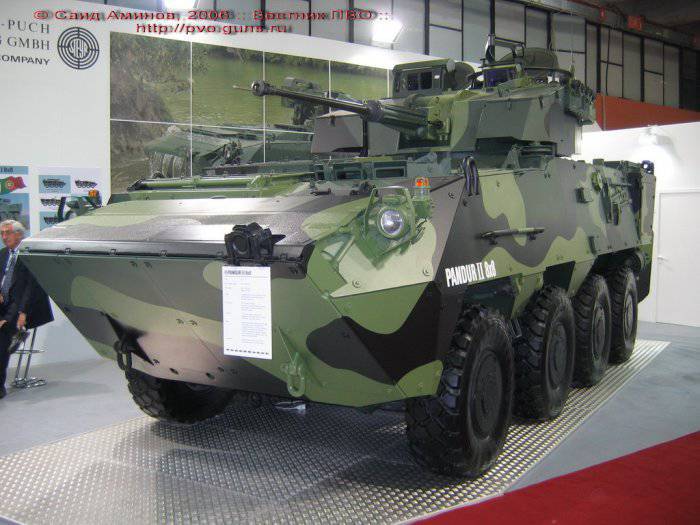
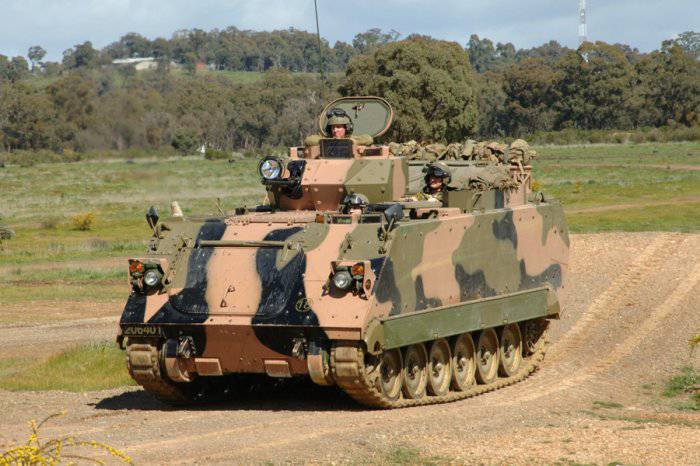
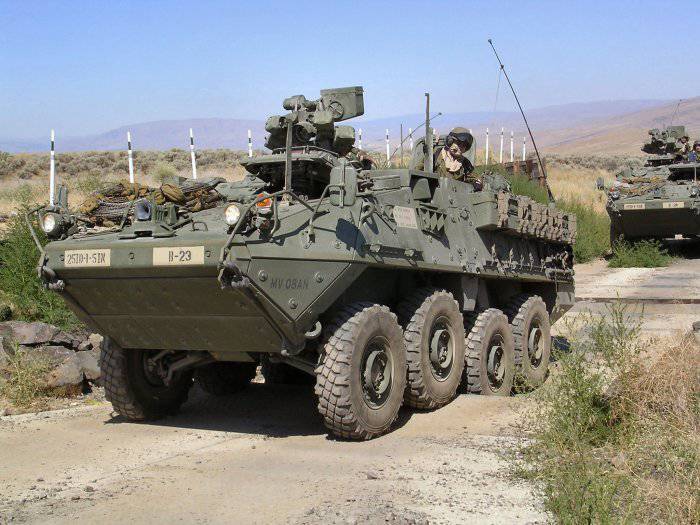
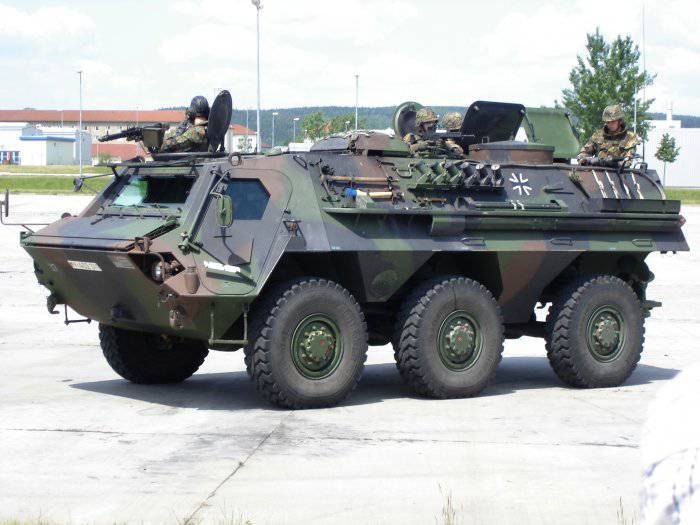
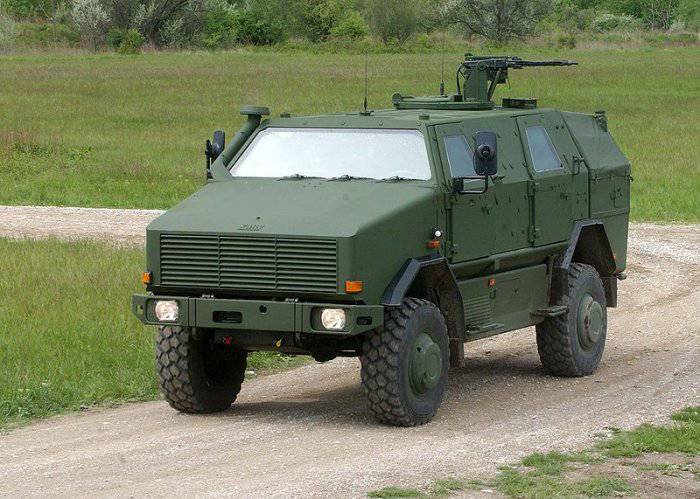
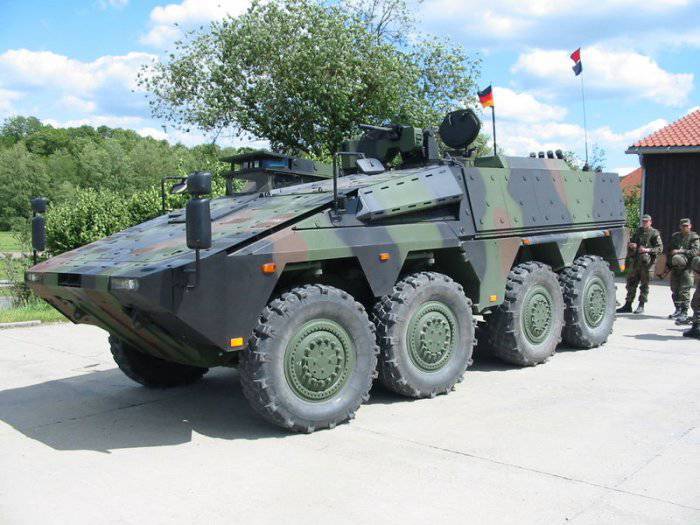
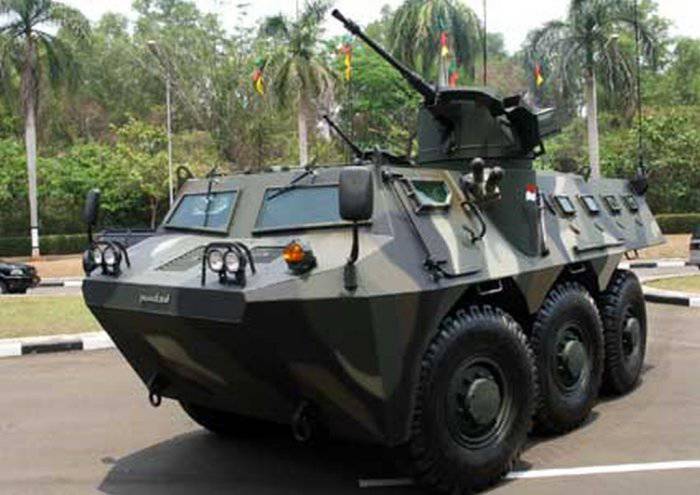
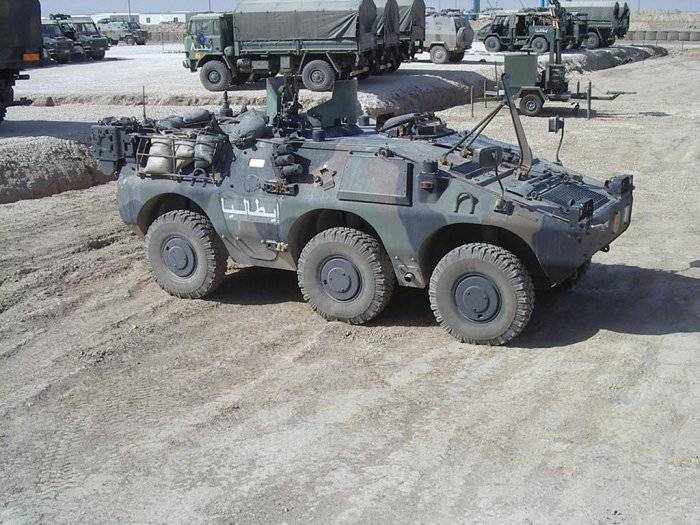
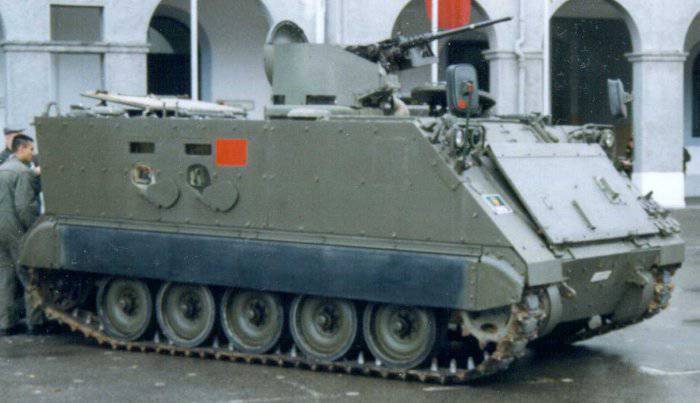
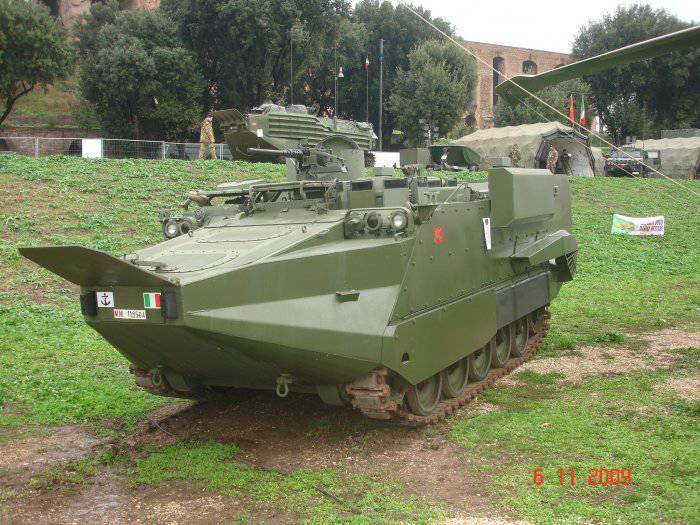
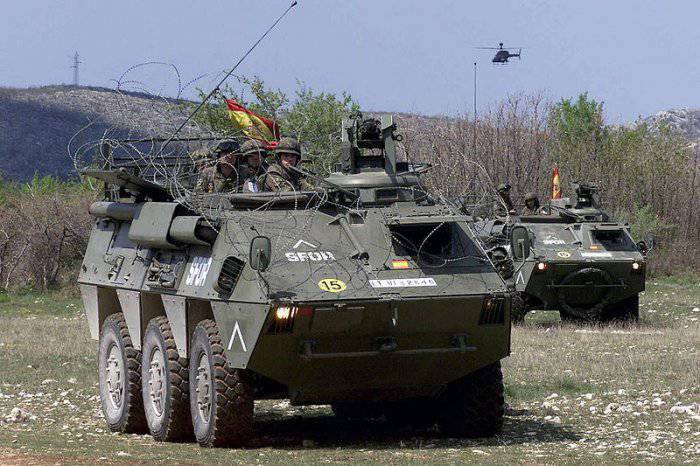
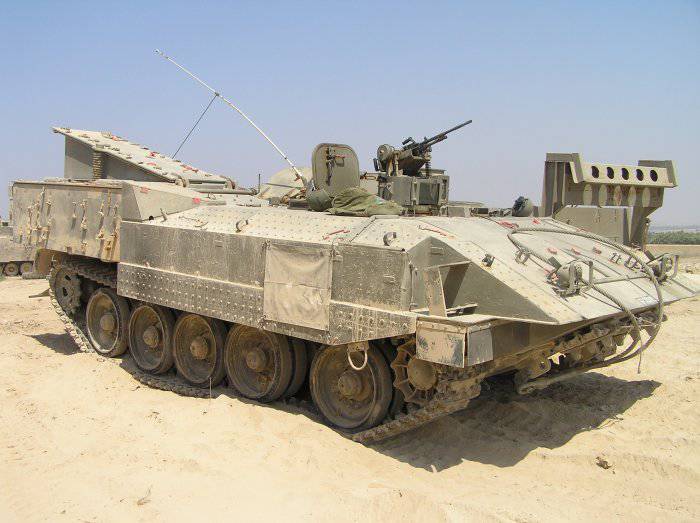
Information